A vertical glass capillary tube, open at both ends, contains some water. Which of the following shapes may not be taken by the water -in the tube?
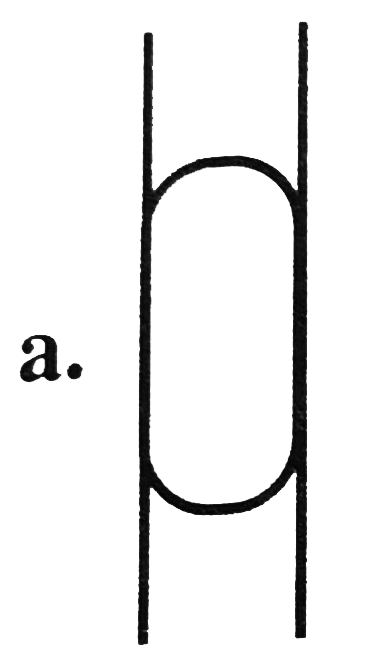
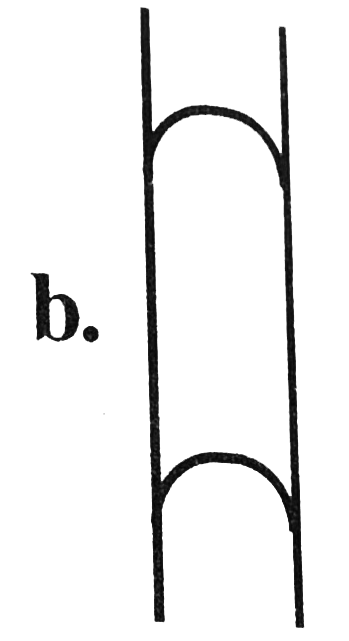
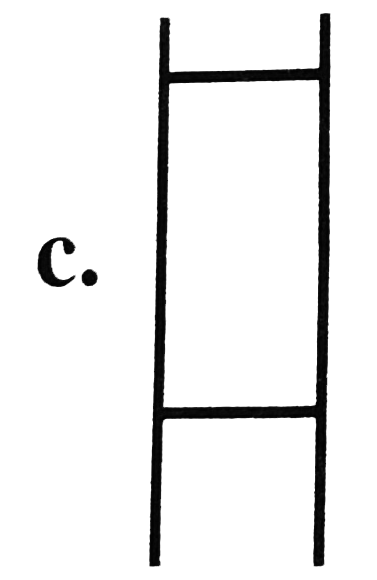
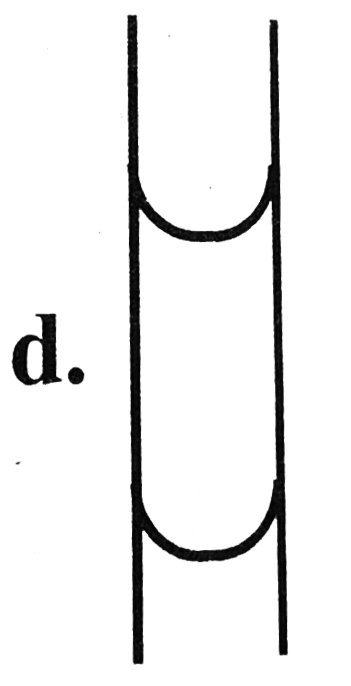
The correct Answer is:A, B, C
To determine which shape may not be taken by the water in a vertical glass capillary tube that is open at both ends, we need to consider the forces acting on the water and the nature of surface tension.
1. Understanding the Setup:
- We have a vertical glass capillary tube that is open at both ends and contains water.
- The forces acting on the water are gravitational force (weight of the water, mg) acting downwards and surface tension acting upwards at the water's surface.
2. Analyzing the Forces:
- The gravitational force pulls the water downwards, while surface tension tends to pull the water upwards.
- For the water to remain in the tube, these forces must be balanced.
3. Identifying Possible Shapes:
- The water can take various shapes depending on the balance of these forces.
- Common shapes include a flat surface, a concave meniscus (curving upwards), or a convex meniscus (curving downwards).
4. Considering the Shapes:
- Flat Surface: This is possible as the forces can balance out.
- Concave Meniscus: This shape is typical in capillary action due to surface tension being stronger than the weight of the water.
- Convex Meniscus: This shape is generally not possible in a vertical tube open at both ends because the weight of the water would dominate over surface tension, causing the water to fall rather than form a convex shape.
5. Conclusion:
- Therefore, the shape that may not be taken by the water in the tube is the convex meniscus.
Final Answer:
The shape that may not be taken by the water in the vertical glass capillary tube is a convex meniscus.
---
- We have a vertical glass capillary tube that is open at both ends and contains water.
- The forces acting on the water are gravitational force (weight of the water, mg) acting downwards and surface tension acting upwards at the water's surface.
- The gravitational force pulls the water downwards, while surface tension tends to pull the water upwards.
- For the water to remain in the tube, these forces must be balanced.
- The water can take various shapes depending on the balance of these forces.
- Common shapes include a flat surface, a concave meniscus (curving upwards), or a convex meniscus (curving downwards).
- Flat Surface: This is possible as the forces can balance out.
- Concave Meniscus: This shape is typical in capillary action due to surface tension being stronger than the weight of the water.
- Convex Meniscus: This shape is generally not possible in a vertical tube open at both ends because the weight of the water would dominate over surface tension, causing the water to fall rather than form a convex shape.
- Therefore, the shape that may not be taken by the water in the tube is the convex meniscus.
The shape that may not be taken by the water in the vertical glass capillary tube is a convex meniscus.
Topper's Solved these Questions
- PROPERTIES OF SOLIDS AND FLUIDSBOOK - CENGAGE PHYSICS ENGLISHCHAPTER - PROPERTIES OF SOLIDS AND FLUIDSEXERCISE - Assertion- Reasoning
13 Videos
- PROPERTIES OF SOLIDS AND FLUIDSBOOK - CENGAGE PHYSICS ENGLISHCHAPTER - PROPERTIES OF SOLIDS AND FLUIDSEXERCISE - Linked Comprehension
30 Videos
- PROPERTIES OF SOLIDS AND FLUIDSBOOK - CENGAGE PHYSICS ENGLISHCHAPTER - PROPERTIES OF SOLIDS AND FLUIDSEXERCISE - Single Correct
112 Videos
- NEWTON'S LAWS OF MOTION 2BOOK - CENGAGE PHYSICS ENGLISHCHAPTER - NEWTON'S LAWS OF MOTION 2EXERCISE - Integer type
1 Videos
- RIGID BODY DYNAMICS 1BOOK - CENGAGE PHYSICS ENGLISHCHAPTER - RIGID BODY DYNAMICS 1EXERCISE - Integer
11 Videos
Similar Questions
A long horizontal glass capillary tube open at both ends contains a mercury thread 1 m long at 0∘C. Find the length of the mercury thread, as read on this scale, at 100∘C.
View SolutionA U-shaped tube open to the air at both ends contains some mercury. A quantity of water is carefully poured into the left arm of the U-shaped tube until the vertical height of the water column is 15.0cm.
(a) What is the gauge pressure at the water mercury interface ?
(b) Calculate the vertical distance h from the top of the mercury in the right hand arm of the tube to the top of the water in the left-hand arm.
 .
.
View Solution
Knowledge Check
A capillary tube (A) is dipped in water. Another identical tube (B) is dipped in a soap-water solution. Which of the following shows the relative nature of the liquid columns in the two tubes?
A B
B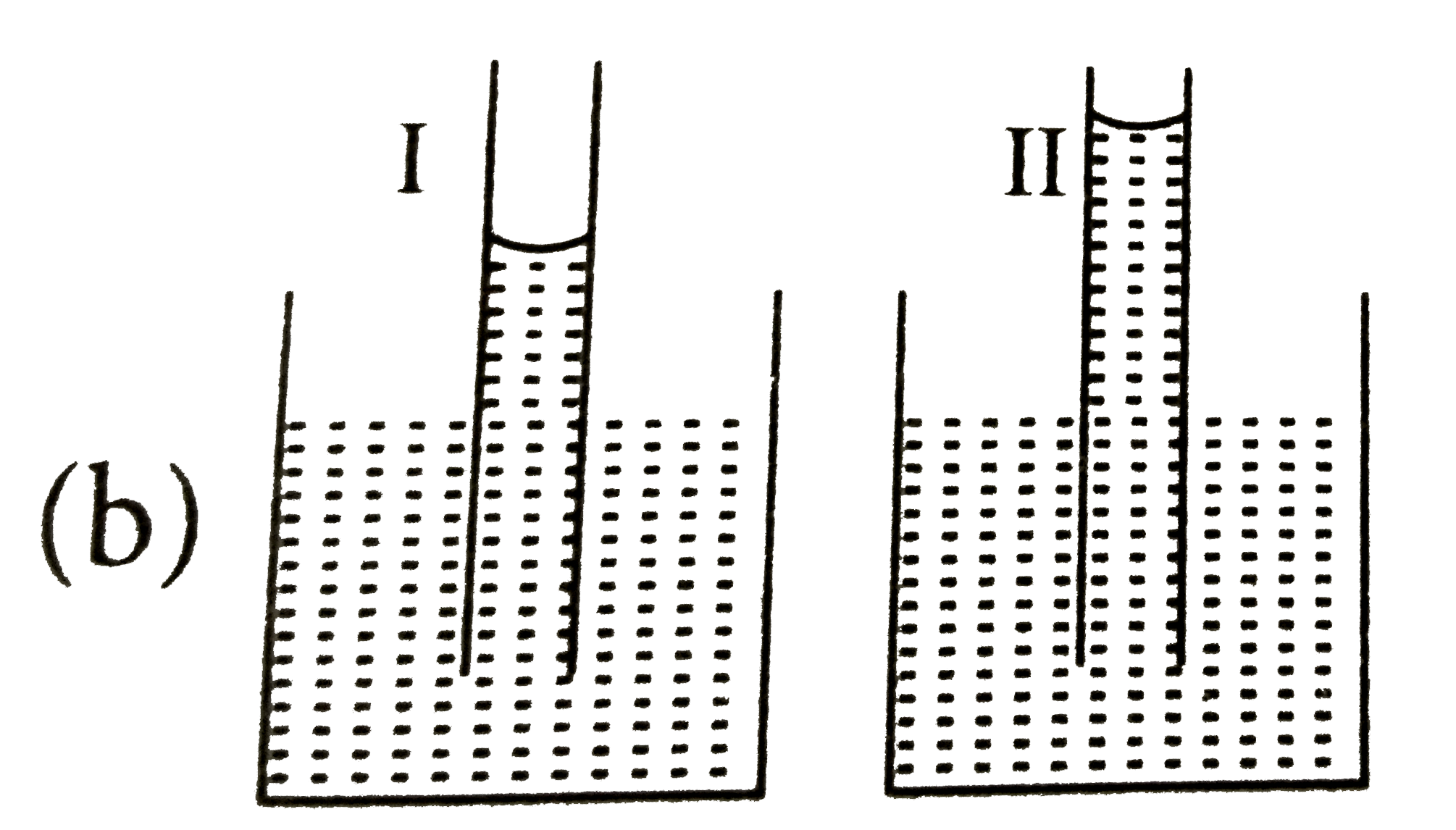 C
C D
D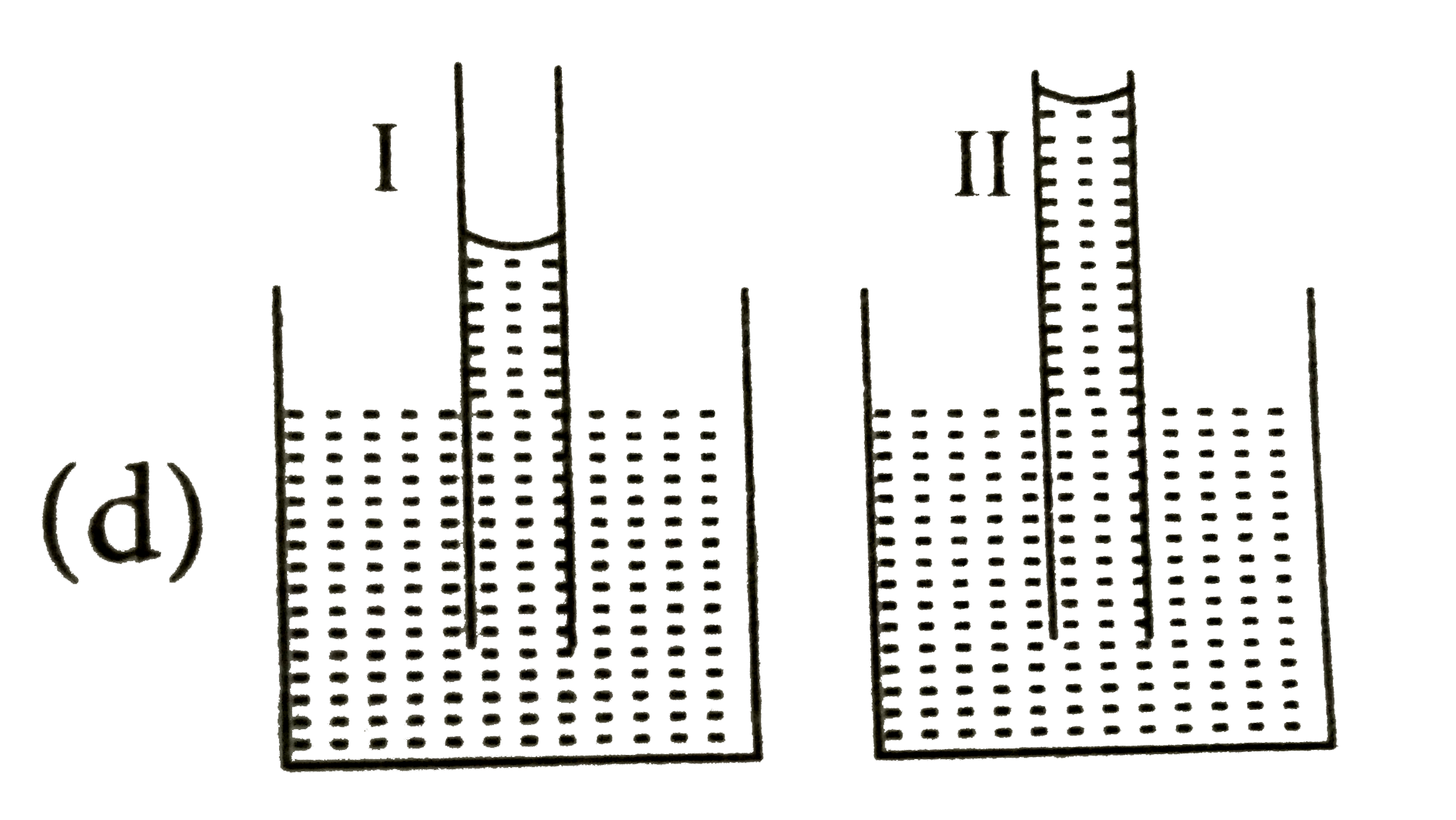
A glass capillary tube of inner diameter 0.28 mm is lowered vertically into water in a vessel. The pressure to be applied on the water in the capillary tube so that water level in the tube is same as the vessel in Nm2 is (surface tension of water =0.07Nm atmospheric pressure =105Nm2
View SolutionA capillary tube (A) is dipped in water. Another identical tube (B) is dipped in a soap-water solution. Which of the following shows the relative nature of the liquid columns in the two tubes?
View SolutionA uniform capillary tube of inner radius r is dipped vertically into a beaker filled with water. The water rises to a height h in the capillary tube above the water surface in the beaker. The surface tension of water is σ. The angle of contact between water and the wall of the capillary tube is θ. Ignore the mass of water in the meniscus. Which of the following statements is (are) true?
View SolutionTwo narrow bores of diameters 3.0mm and 6.0 mm are joined together to form a U-shaped tube open at both ends. If th U-tube contains water, what is the difference in its levels in the two limbs of the tube? Surface tension of water at the temperature of the experiment is 7.3×10−2Nm−1. Take the angle of contact to be zero. and density of water to be 1.0×103kg/m3.
(g=9.8ms−2)
View SolutionTwo narrow bores of diameters 3.0mm and 6.0 mm are joined together to form a U-shaped tube open at both ends. If th U-tube contains water, what is the difference in its levels in the two limbs of the tube? Surface tension of water at the temperature of the experiment is 7.3×10−2Nm−1. Take the angle of contact to be zero. and density of water to be 1.0×103kg/m3.
(g=9.8ms−2)
View SolutionWater rises in a capillary tube to a height 4 cm. If the tube is inclined at an angle of 45∘ with the vertical , find the position of the water in the tube.
View SolutionA capillary tube is dipped in water to a depth and the water rises to a height h(<l) in the capillary tube. The lower end of the tube is closed in water by putting a lower over it. The tube is now taken out and the thumb is removed from the lower end and it kept open. The length of liquid column in the tube will be
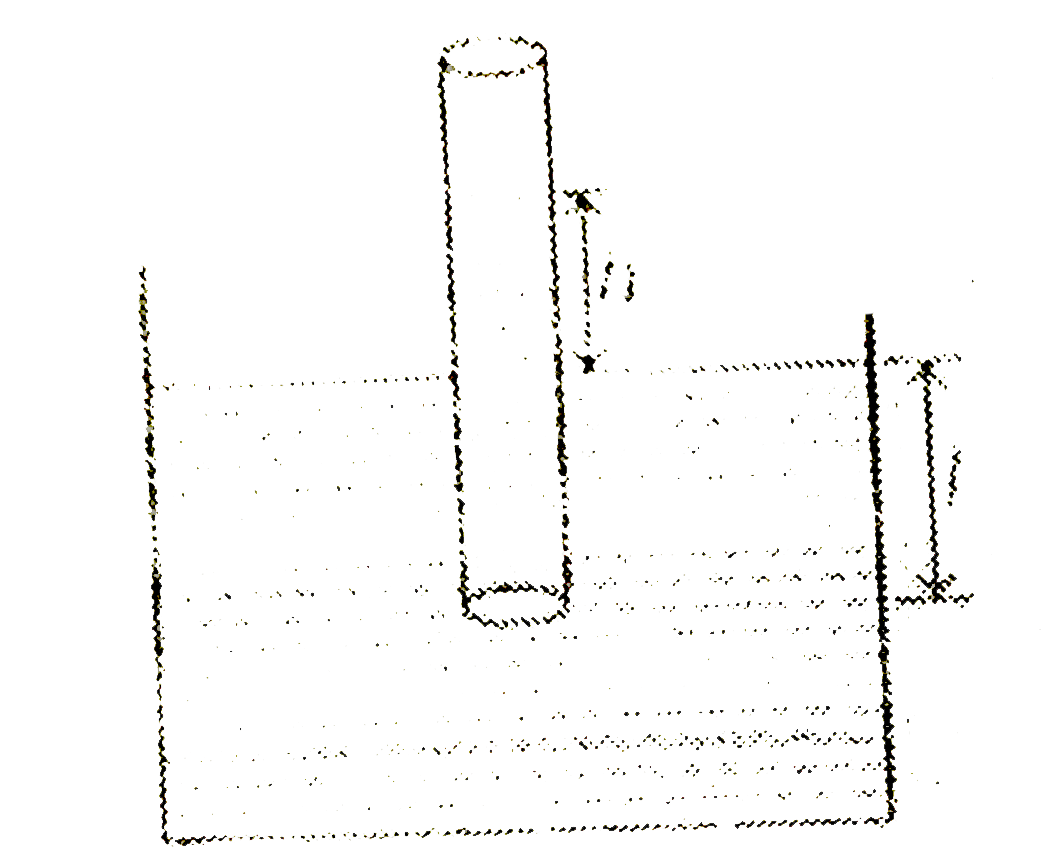
View Solution
